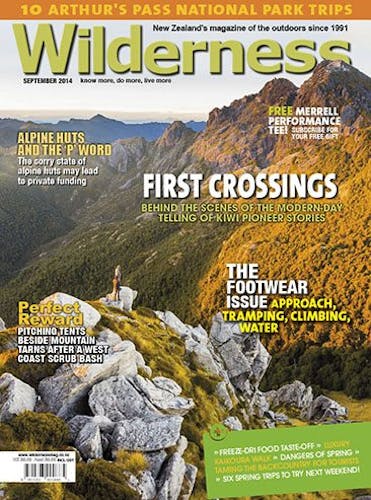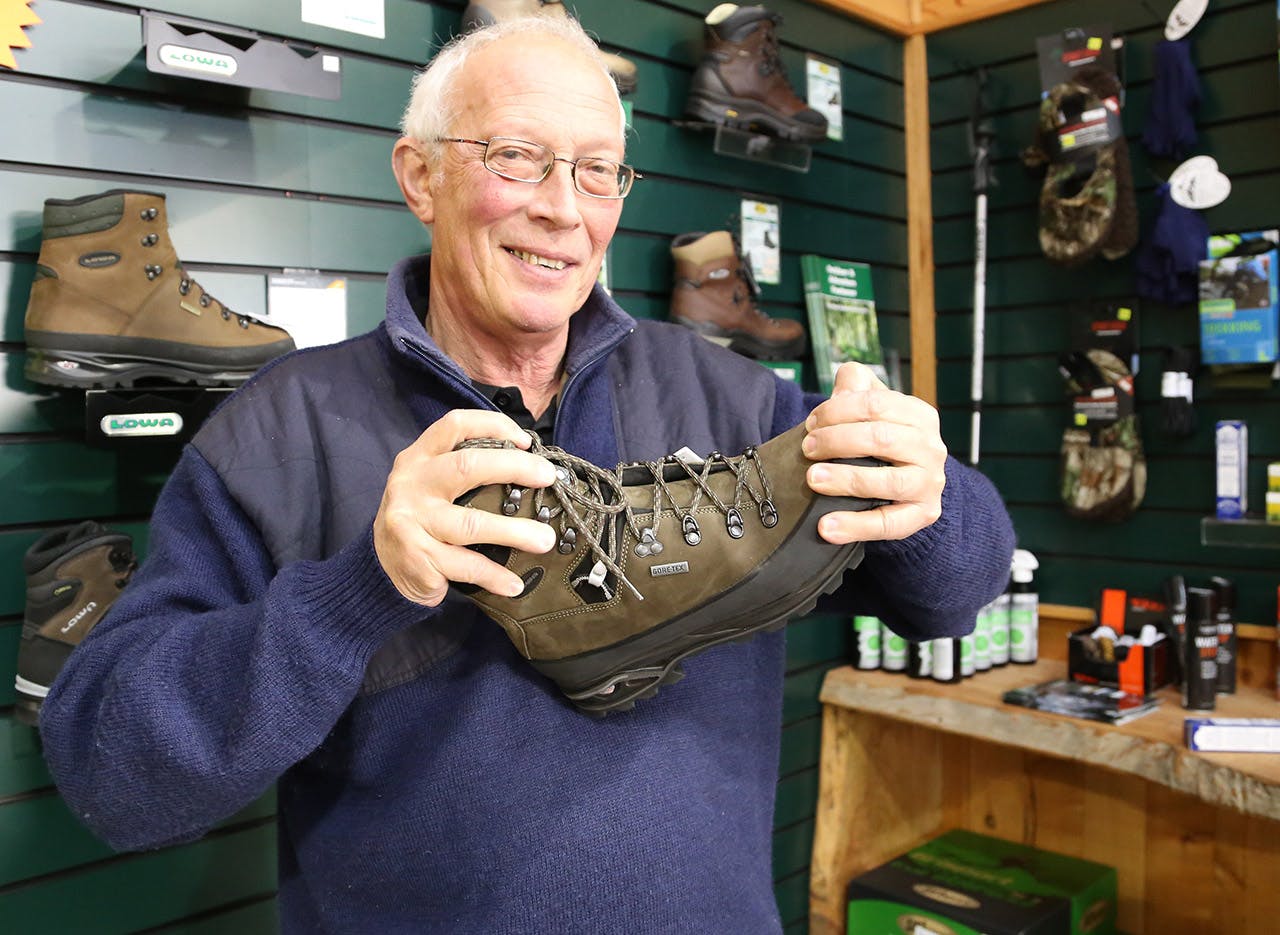Hunting and Fishing’s boot-fitting expert Bill McCloud explains how to buy the right boot
Hard or flexible: McCloud says the first thing he’ll do is ask where you plan to be using the boot so he can determine if a heavier ‘hard-soled’ 3-4 season boot or lighter and more flexible three-season boot is the right choice. “Soft boots tend to let you flex, which means in steeper and harder country the harder boots work to your advantage.”
Wide fit or narrow: The absolute worst thing a boot salesperson can do is sell a pair of ill-fitting or uncomfortable boots. The key thing to consider is wide fit or narrow. In McCloud’s experience, “Kiwis tend to have wide feet”.
The right size: With a pair of medium weight tramping socks on, undo the laces and push your feet forward. McCloud wants to see a 10mm gap between your heel and the back of the boot to allow space for toes on steep descents. “You’ll rip your toe nails off if that’s not the case.”
Next, do the laces up firmly and slide your foot back into the heel and lift it off the ground. “I want the boot to come with the foot,” says McCloud. “If the heel lifts out of the footbed that will create all sorts of grief.”
Walk around the shop: Go for a walk, jump onto benches, walk up and down steps. If there are any pressure points, speak up. “I would rather see him walk out the door than put him into a pair of crippling boots,” says McCloud. “It will wear him out before he wears it in.”
At home: McCloud won’t take a pair of new boots into the bush unless he’s worn them for a full day beforehand. He suggests gradually wearing the boots in – an hour on first wearing, two hours on the second and so on. “Your boots will slowly mould to your feet,” he says. “What we want to do is let that moulding process happen without creating a pressure point. So after that first hour, take them off and don’t put them on again until the next day.”








